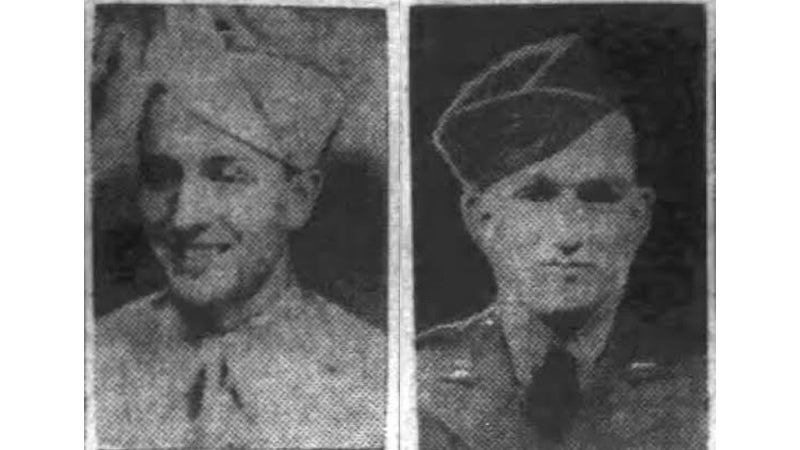Brotherly Sacrifice: Covington County lost three sets of brothers in World War II
Published 1:30 pm Friday, October 13, 2023
|
Getting your Trinity Audio player ready...
|
By Robert Evers, Covington Veterans Foundation
During the Second World War, many families had all sons serving in the armed forces. The Fedele family of New York had eight sons who served during the war, all of whom survived the war. At the start of World War II, brothers were allowed to serve together in the same unit, contrary to official policy. Twenty-three sets of brothers died aboard the USS Arizona during the attack on Pearl Harbor that began the war.
In March of 1942, the USS Juneau was struck by Japanese torpedoes during the Naval Battle of Guadalcanal. Five brothers of the Sullivan family serving on board were lost when the ship sank. Two weeks later, the Rogers family of Birmingham, Alabama, learned that three of their sons were lost when the USS New Orleans was struck by a Japanese torpedo in the Battle of Tassafaronga.
The fate of the Sullivans and the Rogers led the War Department to enforce the policy of separating siblings to avoid such tragedies. Still, hundreds of families would lose more than one son during the war. The Borgstrom brothers were four American siblings from Utah, including twin brothers, killed over a six-month period during World War II.
Covington County, Alabama, lost three sets of brothers during World War II. They were as follows:
The Catrett Brothers
Cpl. John W. Catrett, 1st Armored Regiment, 1st Armored Division, U.S. Army. He was missing in action at the Battle of Sidi Bou Zidin in Tunisia on February 14, 1943. His remains were not found. His name is listed in the Courts of the Missing in the North Africa American Cemetery in Carthage, Tunisia.
T/Sgt James “Jimmie” Catrett, 321st Infantry Regiment, 81st Infantry Division, was killed in action on October 17, 1944, during the battle for Peleliu Island. He is buried in the Brantley Cemetery.
After the war, a third brother, Sgt Roy Catrett, U.S. Air Force, was lost on August 5, 1953, when his RB-36 aircraft crashed into the Atlantic due to an engine fire. The sole surviving Catrett son, William, was a veteran of WWII as well. The Catrett brothers were the sons of Mr. and Mrs. A.J. Catrett of Searight/Andalusia.
The Cook Brothers
PFC Richard A. Cook, 73rd Infantry, Regiment, 92nd Infantry, Division, U.S. Army. He was killed in action in northern Italy on April 17, 1945.
S/Sgt Fred E. Cook, 60th Infantry, Regiment, 9th Infantry, Division, U.S. Army, was killed in action on the first day of Operation Cobra, the Allied breakout of Normandy, on July 25, 1944. The Cook brothers are buried side-by-side in the Red Oak Cemetery. They were the sons of Mr. and Mrs. Joe G. Cook of the Red Oak community.
The Kelley Brothers
PFC Harold R. Kelley, 31st Infantry, Regiment 3rd Infantry, Division, U.S. Army, was killed in action during Operation Dragoon, the allied invasion of Southern France. He is buried in Rhone American Cemetery and Memorial in Draguignan, France.
S/Sgt James C. Kelley, 127th Infantry, Regiment, 32d Infantry Division, was killed in action on March 23, 45, during the Battle of Luzon in the liberation of the Philippine Islands. He rests in Manila American Cemetery and Memorial, Manila, Philippines. The Kelley brothers were the sons of Mr. and Mrs. Elbert J. Kelley of Florala.
The Covington Veterans Foundation is dedicated to preserving and honoring the service and sacrifice of those of this area who served in our nation’s armed forces. If you have additional information or corrections for this story, please email us at covvets.org.








